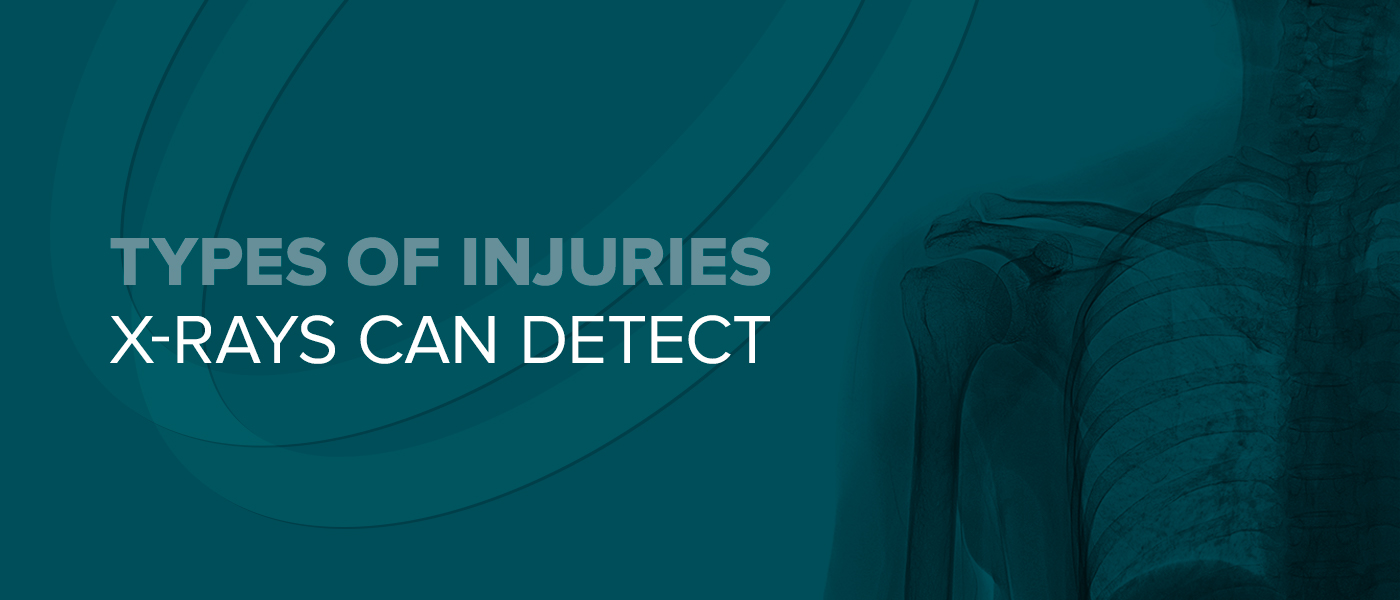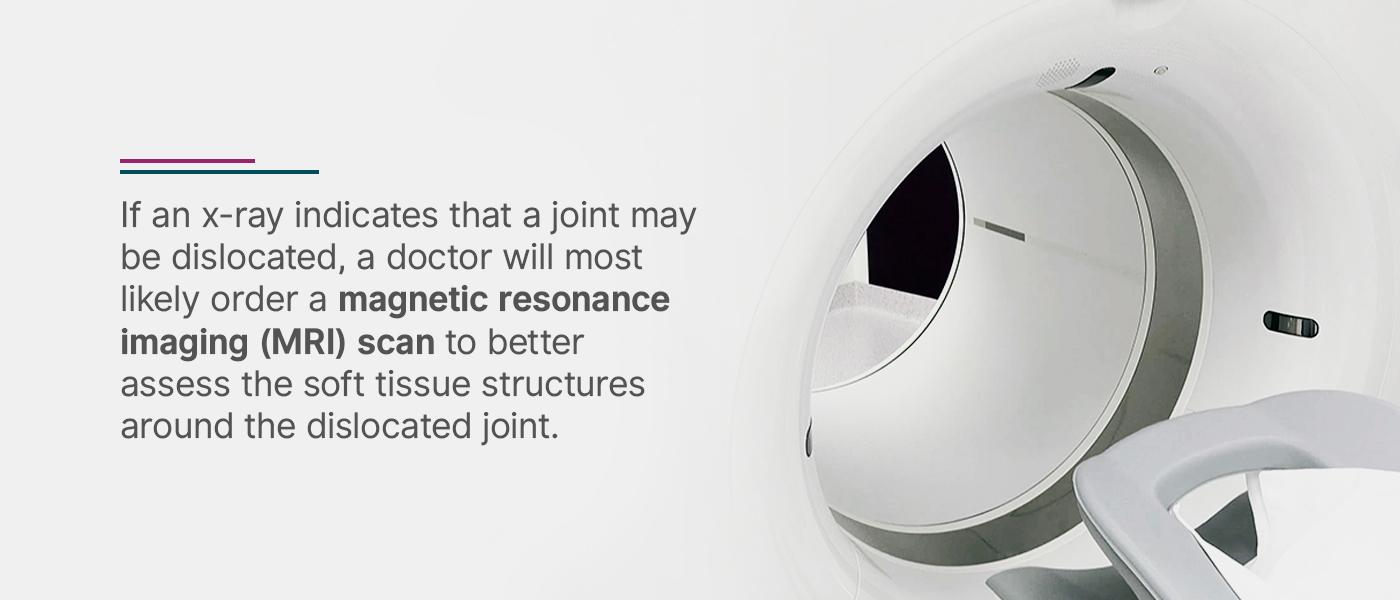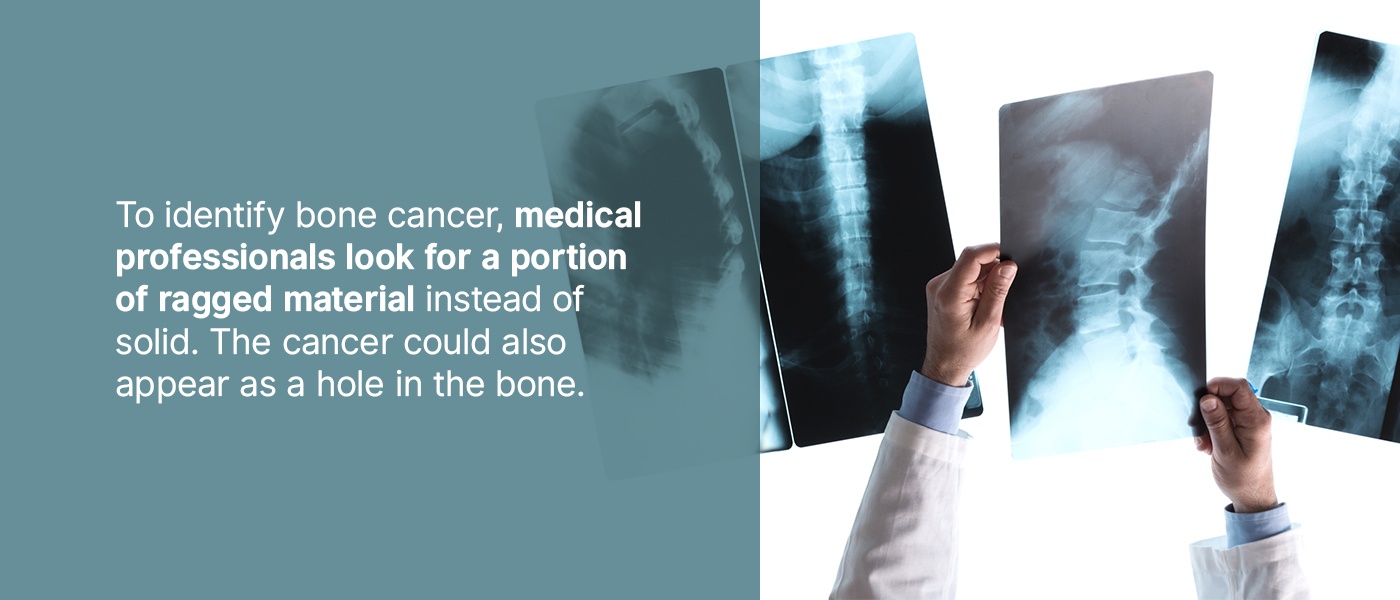Types of Injuries X-rays Can Detect
Short for x-radiation, an x-ray is an imaging test that sends x-ray particles known as photons through the body to produce images captured on a computer or specialized film. Although x-ray is a familiar term, few people know how many types of injuries an x-ray can detect and their many uses within the medical realm.
To make the purpose of x-rays more clear, this article covers what injuries an x-ray can detect and the common conditions this type of imaging benefits most often.
7 Types of Injuries X-rays Detect
A doctor might recommend an x-ray for a patient for numerous reasons. In general, the x-ray will accomplish one of these three goals:
- Examine any areas of pain or discomfort
- Monitor the progression of a disease
- Follow up on how a prescribed treatment was received
More specifically, an x-ray can be used to diagnose, treat or monitor each of the seven conditions listed below.
1. Broken Bones
Typically, when people think of an x-ray, they picture a broken bone. This association is accurate because an x-ray can produce a picture of any bone in the body using a small dose of ionizing radiation. The images an x-ray produces are commonly used to diagnose and locate both broken bones and fractures.
Whether the injury is a compound break or just a thin crack along the bone, an x-ray is most often the fastest and easiest way for a doctor to pinpoint the location and assess the type of break. Once the injury has been diagnosed, an x-ray may still be used following treatment of the break to assess whether the bone fragments are healing properly, stabilized and aligned appropriately.
On the other hand, an x-ray image could show that a suspected bone fracture is not broken at all. Discovering that a break is not to blame for bone pain points a doctor toward other conclusions and other types of scans or tests to help determine the real problem behind the patient’s discomfort.
2. Dislocated Joints
An x-ray of a joint can reveal whether or not the joint is dislocated or damaged in another way. A dislocation injury leads to a loss of anatomical congruence of the bones at a joint, which can cause pain, swelling and immobility of the joint. This separation of two usually adjacent bone parts makes it difficult for a joint to function regularly.
A joint dislocation is described by the position of the bone farther from the center of the body (distal bone) compared with the location of the closer bone (proximal bone). This means the distal bone can dislocate from the proximal bone, but the proximal bone cannot dislocate from the distal bone. For example, the upper arm bone (humerus) can dislocate from the collarbone (clavicle), but the collarbone cannot dislocate from the arm bone.
If an x-ray indicates that a joint may be dislocated, a doctor will most likely order a magnetic resonance imaging (MRI) scan to better assess the soft tissue structures around the dislocated joint.
3. Bone Growths and Spurs
A bone’s growth plate contains special cells responsible for the way a bone grows in length. An x-ray produces a clear picture of growth plates because a growth plate is softer than bone and contains fewer minerals, which makes them appear darker on the x-ray image and easy to recognize. A fractured growth plate can result in pain, swelling and tenderness as well as an inability to move the affected area.
Along with growth plate damage, an x-ray can show other bone growth problems like bone spurs. Bone spurs are bony projections along a bone’s edges that often form where the bone meets another in a joint. Depending on where the bone spurs are located, they may cause no symptoms and not require treatment or cause extreme swelling and difficulty moving.
4. Foreign Body Retrieval
When a foreign substance or object enters the body, it can be difficult to locate or retrieve. To make foreign body retrieval easier and more accurate, medical professionals use x-rays to look into the body’s structures to find exactly where the foreign body is. The image produced by an x-ray can reveal items such as shrapnel, accidentally left behind surgical items and objects that were accidentally swallowed.
Foreign objects or substances can get inside the body by being inhaled into the airway, swallowed, lodged in the stomach or throat or embedded in soft tissues. Approximately 80% of foreign body ingestion incidences occur in children. Although most foreign bodies can smoothly pass through the gastrointestinal tract without causing further health issues, some cases require endoscopic or surgical intervention to remove the foreign body.
The exact evaluation and treatment of foreign body ingestion will depend on the kind of foreign body and the way it got introduced. X-rays are most commonly used for swallowed foreign object cases to examine the stomach, throat and esophagus. An x-ray can also be helpful for identifying foreign objects lodged in soft tissue. Once the foreign body has been identified, it can be successfully removed by the right means.
5. Bone Injury
In addition to diagnosing bone breaks and fractures, an x-ray can help reveal and assess other bone conditions like an infection or arthritis. After x-ray images have detected these problems, the doctor can put the patient on the correct treatment plan to help them recover more quickly. Occasional x-rays can also effectively monitor bony changes commonly seen in some metabolic conditions.
An x-ray can also show whether there are loose pieces of a fractured bone. Once a broken bone no longer needs a cast, there can still be complications after the healing process. A follow-up x-ray can help assure that the bone has healed properly and the patient is not at risk of developing a different bone injury.
6. Bone Cancer
The majority of bone cancers appear on x-rays of the bone. To identify bone cancer, medical professionals look for a portion of ragged material instead of solid. The cancer could also appear as a hole in the bone. By showing whether there is accumulated fluid around a joint, x-rays also provide information as to whether a tumor is present in areas near the bone. In some cases, doctors can locate a tumor around the defect in the bone that might extend into the surrounding muscle or fat tissues.
7. Guided Surgery
An orthopedic surgeon may rely on x-ray technology to assist them when performing various types of surgery. Specifically, a spinal fusion, fracture treatment or joint replacement are common surgical procedures that call for x-rays. Once an x-ray is taken, the surgeon can use the images to guide them during the operation and ensure the correct area is treated to resolve the problem.
Schedule an Appointment for an X-ray at Colorado Springs Imaging or Envision Imaging
If your doctor has recommended you receive an x-ray, schedule your appointment at a top-quality radiology center like Colorado Springs Imaging or Envision Imaging. All Envision Radiology centers prioritize patient care and accurate results, producing immediate and reliable images after every visit. Along with accurate results, our technologists are committed to compassionate care and focus on creating a pleasant experience for each patient.
To book your x-ray appointment, contact Colorado Springs Imaging or the Envision Imaging location nearest you today.
Call To Schedule Your Appointment
Sources:
https://www.radiologyinfo.org/en/info.cfm?pg=foreignbodretrieval




